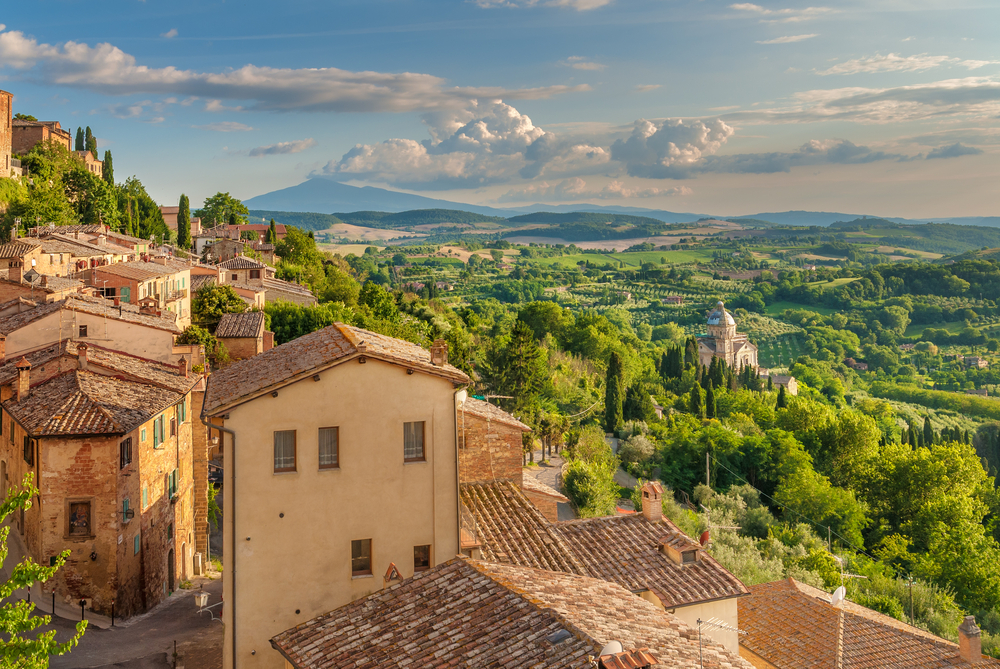13 Italian Villages that Will Pay You Up To $30,000 To Move There

Across Italy, small villages are offering financial incentives—up to $30,000—to those willing to relocate. These historic towns, known for their stunning landscapes and rich cultural heritage, are looking for new residents to help revitalize their communities.
With populations dwindling and local economies struggling, village officials have introduced programs designed to attract fresh energy and investment. The goal is not just to fill empty homes but to breathe life back into centuries-old traditions, support small businesses, and preserve the unique character of these hidden gems.
This is more than a financial opportunity. It’s a chance to embrace a slower, more intentional way of living, surrounded by history, nature, and a close-knit community. But what does it take to qualify? What challenges come with such a move? And is this the right choice for those seeking change? Here’s what to know before stepping into this opportunity.
The Incentives Explained
To combat shrinking populations and economic decline, several Italian villages have launched incentive programs to attract new residents. These programs go beyond financial handouts—they represent a commitment to revitalizing local economies, preserving cultural heritage, and ensuring these villages remain vibrant for generations to come.
Financial Benefits
- Direct Payments – Eligible newcomers can receive up to $30,000 to cover relocation costs, purchase or renovate properties, and even start businesses that contribute to the local economy.
- Tax Advantages – Certain regions offer tax breaks, including reduced income tax rates for the first few years of residency, making the transition financially smoother.
Economic Opportunities
- Business Grants and Loans – Many villages encourage entrepreneurship by offering grants or low-interest loans for new businesses that align with local needs, such as tourism, artisanal crafts, and agriculture.
- Employment Support – Some programs also include job creation initiatives, aiming to strengthen essential services and infrastructure within these communities.
Cultural and Community Integration
- Language and Integration Courses – To help newcomers adapt, some villages offer free Italian language courses and cultural immersion programs.
- Community Events – Festivals, workshops, and local traditions provide opportunities to connect with residents and become part of the village’s social fabric.
These incentives offer more than financial assistance—they provide an opportunity to embrace a way of life rooted in history, tradition, and community.
List of Italian Villages Offering Incentives
 Image source: Shutterstock
Image source: Shutterstock
Several villages across Italy have introduced financial incentives to attract new residents. Each location offers something unique—whether it’s medieval architecture, coastal beauty, or opportunities for entrepreneurship. Here’s a closer look at some of the most notable villages participating in these programs:
1. Santo Stefano di Sessanio, Abruzzo
- Offer: Up to €8,000 per year for three years, plus a one-time grant of up to €20,000 for starting a business.
- Unique Feature: A medieval village nestled in the Apennine Mountains, offering breathtaking landscapes and a strong sense of community.
2. Candela, Puglia
- Offer: Cash bonuses for new residents, along with financial contributions toward housing costs.
- Unique Feature: Known as “Little Naples” for its lively streets, baroque architecture, and colorful festivals.
3. Molise
- Offer: €700 per month for three years to encourage long-term residency.
- Unique Feature: A region offering both mountainous terrain and coastal scenery, ideal for a peaceful rural lifestyle.
4. Presicce-Acquarica, Puglia
- Offer: Up to €30,000 toward purchasing and renovating properties.
- Unique Feature: Renowned for its underground olive mills and centuries-old olive groves.
5. Sambuca, Sicily
- Offer: Homes available for as little as €1, with a requirement to renovate within a specified timeframe.
- Unique Feature: A hillside town with stunning Mediterranean views and a rich cultural history influenced by multiple civilizations.
6. Bivona, Sicily
- Offer: Reduced deposit requirements for €1 homes, along with tax credits for renovations.
- Unique Feature: Surrounded by the Monti Sicani mountain range, offering abundant opportunities for outdoor activities.
7. Lecce nei Marsi, Abruzzo
- Offer: Financial incentives for restoring properties, along with benefits for families relocating to the area.
- Unique Feature: Located near protected national parks, home to diverse wildlife including the Marsican brown bear.
8. Troina, Sicily
- Offer: €1 homes, plus up to €25,000 in renovation grants.
- Unique Feature: A historical stronghold with panoramic views of Mount Etna.
9. Ollolai, Sardinia
- Offer: Homes available for €1 to encourage repopulation and economic revitalization.
- Unique Feature: Rich in Sardinian traditions, known for its craftsmanship and unique cultural heritage.
10. Carrega Ligure, Piedmont
- Offer: Seeking new residents to restore the village’s dwindling population.
- Unique Feature: Ideal for those looking for solitude and an escape from urban life, set within the Apennine Mountains.
11. Montresta, Sardinia
- Offer: Incentives for residents willing to start businesses and support local economic development.
- Unique Feature: A peaceful location with stunning views of both mountains and the sea.
12. Borgomezzavalle, near the Swiss Alps
- Offer: €1 homes, plus additional financial incentives for families and entrepreneurs.
- Unique Feature: Surrounded by snow-capped peaks and lush valleys, perfect for outdoor enthusiasts.
13. Patrica, Lazio
- Offer: Ideal for those seeking a balance between rural and urban life, with proximity to Rome.
- Unique Feature: A village rich in cultural heritage, located just south of the Italian capital.
Each of these villages offers more than just financial support—they present an opportunity to live in a place where history, culture, and a slower pace of life define the everyday experience.
How to Qualify for the Incentives
 Image source: Shutterstock
Image source: Shutterstock
Relocating to an Italian village through these incentive programs requires meeting specific criteria. While each village has its own eligibility requirements, most programs follow a similar structure. Understanding these conditions can help ensure a successful application.
Eligibility Requirements
-
Age and Residency Status: Many programs prioritize applicants under a certain age, typically 40 to 50 years old, to attract younger residents who can contribute to the village’s long-term sustainability. Applicants must commit to establishing full-time residency in the village, meaning temporary or part-time stays generally do not qualify.
-
Property Investment or Renovation Commitment: Some villages require participants to purchase or renovate a property within a set timeframe (often within three years). Certain programs, such as those offering $1 homes, mandate a minimum investment in renovation costs, usually ranging from $16,000 to $32,000
-
Business or Economic Contribution: Many villages encourage entrepreneurship by offering grants or low-interest loans for small businesses in tourism, agriculture, or artisan crafts. Some programs require applicants to present a business plan or demonstrate a commitment to local economic development.
Application Process
-
Gather Documentation: Applying for these incentives requires careful preparation and adherence to local guidelines. Prospective residents must gather essential documentation, including a valid passport or proof of identity, financial records demonstrating their ability to invest in property or a business, and, if required, a detailed business or renovation plan.
-
Submit an Application: Applications are typically submitted through official municipal websites or designated local government offices. Some programs have strict deadlines or limited application periods, making it crucial to verify the latest requirements before applying.
-
Approval and Compliance: Once submitted, applications undergo a review process by local authorities, who assess the applicant’s potential contribution to the community. This may involve interviews or additional documentation requests. Upon approval, recipients must fulfill all commitments, such as completing renovations or launching a business, to maintain eligibility for financial incentives.
Language and Cultural Integration
While basic Italian proficiency is not always mandatory, it is highly recommended for smoother integration, as English is not widely spoken in many rural villages. Some communities offer free language courses to help newcomers adapt.
Beyond language, new residents are encouraged to actively participate in local events, festivals, and gatherings. Engaging with the community fosters meaningful connections and demonstrates a genuine commitment to village life, making the transition into this new lifestyle more fulfilling
Meeting these requirements ensures that the move is not just beneficial for the applicant but also supports the long-term sustainability of the village.
Benefits of Moving to These Villages
 Image source: Shutterstock
Image source: Shutterstock
Relocating to an Italian village offers more than just financial incentives. It provides a chance to embrace a slower, more intentional way of life, surrounded by history, culture, and breathtaking landscapes. The benefits go beyond financial support, offering a lifestyle shift that many find deeply fulfilling.
- Lower Cost of Living and Financial Support: Housing, utilities, and daily expenses are significantly lower in rural villages compared to major cities. Many incentive programs assist with property purchases and renovations, making homeownership more accessible. For remote workers and entrepreneurs, this can mean a higher quality of life with fewer financial burdens.
- Stronger Community and a Slower Pace of Life: Unlike large cities where life moves fast, these villages prioritize connection and tradition. Communities are tight-knit, with neighbors who know each other and engage in local events. Festivals, markets, and gatherings provide plenty of opportunities to integrate and form meaningful relationships. The slower pace encourages a less stressful, more balanced way of living.
- Healthier Lifestyle and Natural Beauty: With access to fresh local produce, clean air, and abundant outdoor activities, rural living naturally supports a healthier lifestyle. Many villages are surrounded by mountains, vineyards, or coastlines, offering hiking, biking, and scenic exploration. A diet rich in locally sourced ingredients, combined with physical activity, contributes to overall well-being.
- Economic and Cultural Opportunities: For entrepreneurs, these villages offer opportunities in sectors like tourism, agriculture, and artisanal crafts, with grants or low-interest loans to support new businesses. Beyond financial prospects, moving to these villages provides an immersive cultural experience. Centuries-old traditions, historic architecture, and a strong sense of heritage make daily life a rich and meaningful experience.
For those looking for more than just a place to live, these villages offer a way to reconnect—with people, nature, and a life that prioritizes fulfillment over busyness.
Challenges to Consider
While the benefits of moving to an Italian village are appealing, the transition comes with challenges. A rural lifestyle requires adaptability, patience, and an understanding of what to expect.
- Language Barriers and Cultural Adjustments: Many villages have limited English speakers, making daily interactions challenging for those who don’t speak Italian. Some communities offer language courses, but learning the basics beforehand is highly recommended. Cultural differences also play a role—bureaucratic processes in Italy can be slow, and many businesses follow traditional schedules, including midday closures. Adapting to these rhythms is essential for a smooth transition.
- Limited Services and Infrastructure: Unlike major cities, small villages may have fewer healthcare facilities, schools, and shopping centers. Public transportation is often unreliable, making car ownership a necessity. Internet access can also vary, which is an important consideration for remote workers. Researching available services before moving is crucial.
- Employment and Home Renovation Challenges: Job opportunities in these villages are often limited, especially for those in specialized fields. Many incentive programs target entrepreneurs rather than traditional employees. Additionally, purchasing and renovating homes—especially $1 properties—requires patience, as restoration must comply with strict architectural preservation laws. Navigating permits and paperwork can take time, requiring careful budgeting and planning.
- Rural Isolation and Seasonal Quietness: While villages offer a strong sense of community, they can also feel isolated, especially for those used to city life. Some villages experience seasonal fluctuations, with lively summers but quieter winters. Social activities may slow down during certain months, making it important to find ways to stay engaged and connected.
Despite these challenges, those who prepare well and embrace the differences often find the rewards of village life far outweigh the difficulties. The key to a successful transition lies in setting realistic expectations and approaching the move with an open mind.
Embracing a New Life in Italy’s Rural Heartlands
Embracing the opportunity to move to an Italian village comes with a distinctive blend of challenges and rewards. The financial incentives are undeniably appealing, and the chance to integrate into a tight-knit community, immerse oneself in rich cultural traditions, and lead a healthier, slower-paced lifestyle are powerful draws. However, the move also requires careful consideration of the potential obstacles such as language barriers, limited services, and the adjustments needed for rural living.
For those willing to navigate these challenges, the rewards can be profound. The beauty of Italy’s landscapes, the depth of its history, and the warmth of village communities offer a quality of life that is rare and enriching. With proper preparation and a spirit of adventure, the dream of living in an Italian village can become a rewarding reality, marked by personal growth, new friendships, and a deepened appreciation for the simple joys of life.
By embracing both the benefits and the challenges, potential movers can fully integrate and contribute to the revival of these beautiful communities, ensuring these hidden gems of Italy continue to thrive for generations to come.
Loading...






